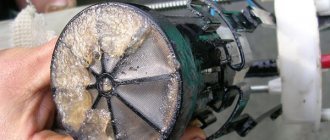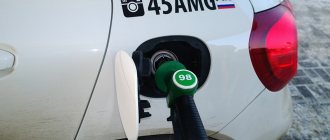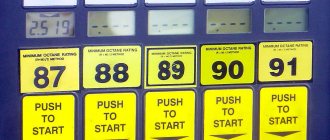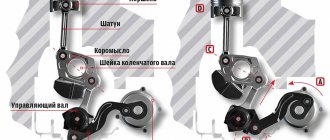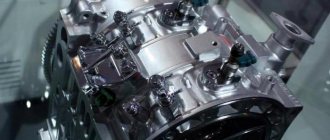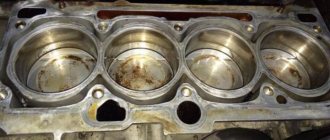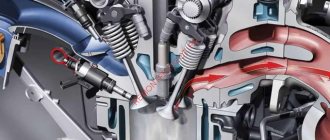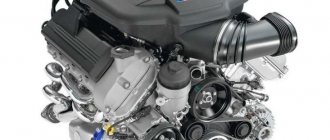Ways to increase the octane number of gasoline
Looking at the rising cost of fuel at gas stations, many motorists have the crazy idea of increasing the octane number of gasoline. Why not?
Of course, in practice, this work falls on the shoulders of oil refineries, whose methods for such conversion are very complex. But sometimes an ordinary car enthusiast can do such an original task.
What's the point
First, let’s figure out what kind of indicator this is and why it should be improved.
So, the octane number characterizes the detonation properties of gasoline, that is, its ability to ignite at the right time and with the required quality.
This is the main indicator that receives special attention. For example, if the octane rating of gasoline is AI-95, then this indicates its detonation by 95% (like isooctane) and 5% (like heptane).
At the very first moment after oil refining, gasoline has a minimum octane number of 70. Later, using various methods and additives, this figure can be raised to the desired level.
The octane number is determined on a special stand (often it looks like a special motor for testing). The test is performed under various loads - small and medium.
But recently, special devices have begun to appear that simplify testing.
The parameters of the fuel used for the experiment are compared with standard compositions of isooctane and heptane. After this, gasoline is assigned its own “number”.
By the way, each organic compound has its own level of detonation resistance.
For example, methane has an octane rating of 107.5; propane – 105.7; benzene – 113; butane – 93.6; straight distilled gasoline - about 58, catalytic cracking - about 80-85 and catalytic reforming - 83-97.
Why change the octane setting?
With a low octane number, gasoline may ignite much earlier than necessary. In this case, the engine power decreases, and the detonation process, well known to many car enthusiasts, appears.
In addition, the use of low-octane gasoline leads to engine detonation, reducing the service life of a whole group of its main elements - seats, valves, spark plugs, and so on. If you abuse low-quality fuel, the engine will have to be overhauled much earlier than scheduled.
So in order to improve the quality of gasoline and significantly improve its performance, it is still necessary to increase the octane number.
How it's done? What are the features of each method? This is exactly what we will talk about in more detail.
Basic methods
Today there are several main ways to increase octane.
Catalytic cracking.
A process that can only be implemented in an oil refinery environment. This method involves heating oil on a catalyst to temperatures slightly above 500 degrees Celsius.
During heating, the molar mass in Alkanes decreases, which allows the output of two elements - aromatic carbons and Alkenes.
As a result, gasoline with an octane number of 91-92. The disadvantage of such fuel is the high concentration of aromatic carbohydrates. Consequently, when storing fuel for a long time, the octane number may decrease.
Catalytic reforming.
Here, the fuel obtained after direct distillation is heated to 500-520 degrees Celsius. At the same time, the catalyst (rhenium, aluminum oxide with platinum and other metals) is under pressure of about 35 atmospheres. At the final stage, 95-grade gasoline is obtained. Efficiency is about 75%.
As in the first case, this type of work is performed only under special conditions at the factory.
Methyl tert-butyl ether.
This is one of the most popular additives for increasing the octane number of fuel. Its characteristics are colorlessness, easy flammability, low toxicity, strong odor and high octane level.
It is enough to add about 15% of this ether (of the total volume of fuel) to gasoline to increase the octane number by 8-12 points.
Most often, this method is used to increase octane. But it has a drawback - gasoline obtained in this way evaporates much faster in sunny weather due to its increased volatility.
Alcohol additives (based on ethyl or methyl alcohol).
Also used to improve fuel quality. For example, by adding 1/10 of ethyl alcohol to AI-92 gasoline, you can make it 95. At the same time, the toxicity of exhaust emissions from the car is significantly reduced.
But this method has a number of disadvantages.
Thus, the ability of alcohol to absorb moisture is manifested, which requires the car enthusiast to take additional measures to “dry” the gasoline.
In addition, there is a high risk of blockages in the fuel system.
By the way, if no measures are taken, water appears in the fuel, which means increased consumption, incomplete combustion of the fuel mixture, a high risk of gasoline freezing in the system and other problems. Therefore, you will have to remove water from gasoline.
Tetraethyl lead.
One of the highest quality additives, which has been actively used since 1921.
1/20 of this substance is enough to raise the octane level by 15-18 positions.
Tetraethyl lead is used in combination with special “carrier substances”, which remove the lead oxide formed during combustion of the additive.
Today this method has been banned due to dangerous lead fumes and their negative effects on the human body. The vapors of the substance are very poisonous.
In addition, such fuel cannot be used in cars with catalytic converters (the equipment breaks down after just a few hours of operation).
Effect of additives
Of course, high-octane fuel is a big plus for the engine. The latter works more stable, power increases, fuel consumption decreases, and so on.
That is why the obsolete and inefficient types of fuel AI-76 and AI-80 are gradually coming out of use. But there are certain risks here too.
If you fill your car with gasoline with a “makeshift” increased octane number, you may encounter a number of problems, starting with the usual replacement of spark plugs and ending with a major engine overhaul.
Other additives.
Offers on the market.
conclusions
Thus, it is possible to increase the octane number, and there are plenty of ways. But remember that practicing such “art” at home is extremely dangerous.
It is better when such work is carried out by professionals and only in specially equipped premises.
As for the use of various additives, the engine does not react very positively to them - remember this.
Good luck.
avtokod.net
How to increase the octane number of fuel (gasoline)?
All modern cars are equipped with high-speed engines that can provide fuel economy at high speeds, as well as dynamics during acceleration. Such a power unit requires high-quality gasoline that can evaporate in a matter of seconds. As a rule, AI-95 and AI-98 meet these requirements. However, their cost is quite high ($1-1.5 per 1 liter). After several refuelings, each driver begins to think about switching to cheaper brands, such as AI-92. Having done this, the car becomes slow and loses dynamics when accelerating.
Also, such experiments negatively affect the durability of the engine and injectors (the carburetor is less demanding). No matter how strange it may sound, when the quality of gasoline decreases, consumption increases significantly. This is explained by the fact that the engine increases the volume of the mixture to maintain the required power. So what to do if refueling with high-quality fuel is expensive, but your conscience does not allow you to systematically destroy the engine.
There is an exit! Increase the octane number of gasoline. Any liquid burns due to hydrocarbon compounds, which can be either aromatic or paraffin based. Having a branched structure, the molecules ignite quite easily. Today there are a large number of different additives that differ both in price and principle of operation.
Tetraethyl lead
The most popular additive at the end of the 80s. When this substance was burned, a large amount of volatile, toxic substances were released. Nowadays, this technology is completely outdated and does not comply with established environmental standards.
Manganese additive
A fairly effective remedy that can burn out the engine at the slightest deviation. During combustion, a large amount of toxic substances is released, so this technology is prohibited.
Watch the video
Ferrocene
A popular mixture that was actively used until the beginning of 2000. Increasing the octane number of gasoline at home is quite simple, since with a small error the fuel will not burn the power unit. Ferrocene, when burned, releases a lot of soot, which also contains heavy metals that can conduct current. Subsequently, soot deposited on the spark plugs will quickly disable the modules. At the same time, it is almost impossible to get rid of this carbon deposits mechanically.
Monomethylaniline
The most popular substance today. Widely used in the CIS. Having a low initial cost, monomethylaniline can not only increase the octane number of gasoline, but also reduce the harmfulness of exhaust gases. The only drawback of this technology is the high cost of the additive.
Gas stations also often use additives. As a rule, their concentration does not exceed 3 liters per 1 ton of fuel. However, by increasing this figure by 1-1.7% you can get a good result.
autosteam.ru
General concept
The combustible mixture of fuel and air is compressed in the cylinder before ignition. Moreover, the compression ratio depends on the engine design and is in the range of 7–10. An important point: gasoline must ignite at a certain moment when a spark discharge is applied to the spark plug electrodes.
Reference. It's worth clarifying what engine compression ratio means. This is a figure showing how many times the combustible mixture is compressed before ignition. It is calculated simply: the total displacement of the cylinder is divided by the volume of the combustion chamber. In old engines this figure is 7, in more modern engines it reaches 9–10.
If the air-fuel mixture ignites prematurely during piston compression (as in a diesel engine), the following will happen:
- Self-ignition of gasoline causes a micro-explosion - burning at too high a speed.
- The flash energy propagates in two directions - towards the piston and the combustion chamber.
- Since all the valves are closed, the shock is reflected from the walls and hits the piston, which continues to move upward. There is a loud metallic knocking sound from the piston pin.
The octane number of gasoline characterizes its resistance to detonation and is defined as the percentage ratio of the mixture of two hydrocarbons included in the fuel:
- isooctane, practically incapable of spontaneous combustion at high pressure;
- n-heptane, on the contrary, flares up under slight compression.
The detonation characteristic of isooctane is assumed to be equal to 100 units, n-heptane - zero. The greater the proportion of the first substance, the higher the resistance of the fuel to self-ignition during compression.
The maximum octane number of 98 units in the gasoline marking means the greatest resistance to detonation. This fuel is intended for engines with the highest compression ratio - 10. Accordingly, grade 95 fuel is suitable for engines that compress the mixture 9 times (the vast majority of these). Obsolete versions of power units with a compression ratio of 8 use A-92 gasoline.
The letter “and” in the letter part of the AI-95 gasoline marking means that the octane number was measured using a research method.
Article on the topic: Tinting of VAZ family cars
Methods for increasing the octane number of gasoline using additives
Knock resistance is assessed quantitatively using the octane number. Therefore, the octane number is considered to be an indicator of fuel quality. That is, the higher the octane number, the better the quality of the fuel. And modern cars have become increasingly accustomed to high-quality fuel, and what’s more, many, almost all foreign cars have become accustomed to high-quality fuel. And we had an idea. It is interesting to study the method of increasing the octane number using gasoline additives.
As everyone knows, the quality of gasoline is determined by its resistance to detonation (the phenomenon of very rapid ignition in the internal combustion chamber). The higher the fuel index, the more resistant it is to spontaneous combustion. Due to this, modern internal combustion engines are designed for fuel with an octane rating of at least A95. But quite often we become victims of monstrous deception. Unscrupulous gas stations fill up with second and third grade gasoline instead of high-quality fuel, which causes the car to perform worse.
Perhaps you are already guessing which gas station unscrupulously pours low-quality fuel into your car, and for greater safety and peace of mind, you should keep several bottles of additives in your car. These bottles with additives are called “Octane Correctors” and serve to increase the octane number of fuel. And yet, does it make sense to use such additives and how do they work?
The largest Russian Petroleum Institute undertook to qualitatively test the additives. Having carefully checked the fuel and its octane number, the researchers came to the conclusion that the additives used for the previously tested Regular-92 gasoline increased the octane number by no more than one and a half percent. And the additive from the Ukrainian manufacturer generally managed to reduce detonation resistance. The gasoline was originally 93.0 octane and was split into parts for testing during testing. The Russian-made additive became the best. Germany and the USA are in second place.
First, let's talk about the Astrochem additive, which is often used in such tests and gives good results. The additive is a leader among domestic products. The additive copes with its task perfectly and is sold at a relatively low price - ninety rubles.
The next test subject was the German LMOP. This octane corrector has long established itself on the Russian market, having good performance. The additive was able to raise the octane number of plain 92 gasoline to A95! Another positive thing to note is the comfortable watering can spout on the bottle. Such a product should cost about 215 rubles.
Now let's discuss the third octane corrector from the USA. Cyclo Octane Boost is more of a general purpose additive. Its properties have proven themselves promising. Having the ability to improve anti-knock resistance, it also cleans fuel equipment components. But in fact, this additive showed 0.7 out of 3 percent increase in octane number, one hundred can be considered the lowest on the list (not counting Ukraine). The average cost is one hundred seventy rubles.
The most expensive on this list can be considered Hi-Gear OBC, also from the United States. This product has proven itself to be of high quality and has won the respect of Russian motorists. In testing, as in the case of Germany, the effect was one and a half percent. This additive has its drawbacks, which include an inconvenient neck and a fairly high price. One bottle will cost about 250 rubles.
tickety-pdd.com
What is octane number?
Octane number refers to resistance to ignition under compression. This indicator is numerically equal to the amount of isooctane in a mixture with another important component - n-heptane. There are different types of octane rating. They are defined in different ways:
- research octane number;
- motor octane number.
Accordingly, these indicators are designated as OCH and OCH. The difference between them is represented as fuel sensitivity. If it is necessary to determine the indicator under real engine operating conditions, the “actual octane number” indicator is used. It is determined on a special stand, right while the engine is running.
The “road” octane number is as close as possible to the real indicator. It is measured directly on the vehicle. Isooctane itself is quite problematic to ignite even at a high compression ratio. The value of its octane number is assumed to be constant - it is equal to 100.
In this case, the combustion of n-heptane in the case of low compression rates is accompanied by knocking in the engine. Its octane number is assumed to be 0. For fuel with an octane number of more than 100, there is a specialized scale. Depending on the engine and operating conditions, a special component is added to it - isooctane. An anti-knock agent may also be added.
Using gasoline with an octane number that is not suitable for the engine parameters results in a metallic ringing sound. It appears due to pressure waves created during excessively rapid combustion of fuel, reflected from the walls of the piston/cylinders.
Ways to increase the octane number of gasoline
Looking at the rising cost of fuel at gas stations, many motorists have the crazy idea of increasing the octane number of gasoline. Why not? Every driving instructor in Moscow will think about this.
Of course, in practice, this work falls on the shoulders of oil refineries, whose methods for such conversion are very complex. But sometimes an ordinary car enthusiast can do such an original task.
What's the point
Moscow driving instructor (specialist opinion).
First, let’s figure out what kind of indicator this is and why it should be improved.
So, the octane number characterizes the detonation properties of gasoline, that is, its ability to ignite at the right time and with the required quality.
This is the main indicator that receives special attention. For example, if the octane rating of gasoline is AI-95, then this indicates its detonation by 95% (like isooctane) and 5% (like heptane).
At the very first moment after oil refining, gasoline has a minimum octane number of 70. Later, using various methods and additives, this figure can be raised to the desired level.
The octane number is determined on a special stand (often it looks like a special motor for testing). The test is performed under various loads - small and medium.
But recently, special devices have begun to appear that simplify testing.
The parameters of the fuel used for the experiment are compared with standard compositions of isooctane and heptane. After this, gasoline is assigned its own “number”.
By the way, each organic compound has its own level of detonation resistance.
For example, methane has an octane rating of 107.5; propane – 105.7; benzene – 113; butane – 93.6; straight distilled gasoline - about 58, catalytic cracking - about 80-85 and catalytic reforming - 83-97.
Why change the octane setting?
With a low octane number, gasoline may ignite much earlier than necessary. In this case, the engine power decreases, and the detonation process, well known to many car enthusiasts, appears.
In addition, the use of low-octane gasoline leads to engine detonation, reducing the service life of a whole group of its main elements - seats, valves, spark plugs, and so on. If you abuse low-quality fuel, the engine will have to be overhauled much earlier than scheduled.
So in order to improve the quality of gasoline and significantly improve its performance, it is still necessary to increase the octane number.
How it's done? What are the features of each method? This is exactly what we will talk about in more detail.
Basic methods
Today there are several main ways to increase octane.
Catalytic cracking.
A process that can only be implemented in an oil refinery environment. This method involves heating oil on a catalyst to temperatures slightly above 500 degrees Celsius.
During heating, the molar mass in Alkanes decreases, which allows the output of two elements - aromatic carbons and Alkenes.
As a result, gasoline with an octane number of 91-92. The disadvantage of such fuel is the high concentration of aromatic carbohydrates. Consequently, when storing fuel for a long time, the octane number may decrease.
Catalytic reforming.
Here, the fuel obtained after direct distillation is heated to 500-520 degrees Celsius. At the same time, the catalyst (rhenium, aluminum oxide with platinum and other metals) is under pressure of about 35 atmospheres. At the final stage, 95-grade gasoline is obtained. Efficiency is about 75%.
As in the first case, this type of work is performed only under special conditions at the factory.
Methyl tert-butyl ether.
This is one of the most popular additives for increasing the octane number of fuel. Its characteristics are colorlessness, easy flammability, low toxicity, strong odor and high octane level.
It is enough to add about 15% of this ether (of the total volume of fuel) to gasoline to increase the octane number by 8-12 points.
Most often, this method is used to increase octane. But it has a drawback - gasoline obtained in this way evaporates much faster in sunny weather due to its increased volatility.
Alcohol additives (based on ethyl or methyl alcohol).
Also used to improve fuel quality. For example, by adding 1/10 of ethyl alcohol to AI-92 gasoline, you can make it 95. At the same time, the toxicity of exhaust emissions from the car is significantly reduced.
But this method has a number of disadvantages.
Thus, the ability of alcohol to absorb moisture is manifested, which requires the car enthusiast to take additional measures to “dry” the gasoline.
In addition, there is a high risk of blockages in the fuel system.
By the way, if no measures are taken, water appears in the fuel, which means increased consumption, incomplete combustion of the fuel mixture, a high risk of gasoline freezing in the system and other problems. Therefore, you will have to remove water from gasoline.
Tetraethyl lead.
One of the highest quality additives, which has been actively used since 1921.
1/20 of this substance is enough to raise the octane level by 15-18 positions.
Tetraethyl lead is used in combination with special “carrier substances”, which remove the lead oxide formed during combustion of the additive.
Today this method has been banned due to dangerous lead fumes and their negative effects on the human body. The vapors of the substance are very poisonous.
In addition, such fuel cannot be used in cars with catalytic converters (the equipment breaks down after just a few hours of operation).
Effect of additives
Of course, high-octane fuel is a big plus for the engine. The latter works more stable, power increases, fuel consumption decreases, and so on.
That is why the obsolete and inefficient types of fuel AI-76 and AI-80 are gradually coming out of use. But there are certain risks here too.
If you fill your car with gasoline with a “makeshift” increased octane number, you may encounter a number of problems, starting with the usual replacement of spark plugs and ending with a major engine overhaul.
Other additives.
Offers on the market.
conclusions
Thus, it is possible to increase the octane number, and there are plenty of ways. But remember that practicing such “art” at home is extremely dangerous.
It is better when such work is carried out by professionals and only in specially equipped premises.
As for the use of various additives, the engine does not react very positively to them - remember this.
(Website of private driving instructors: https://avtosensei.ru/)
Similar articles:
News → What can distract a driver from the road and cause an accident
News → What cars are stolen and why
Automobile education → CASCO for used cars
Auto education → How to choose a good car on the car market yourself?
Automotive education → Fuel consumption: overcoming the crisis together with Hyundai
Comments ()
avtosensei.ru
